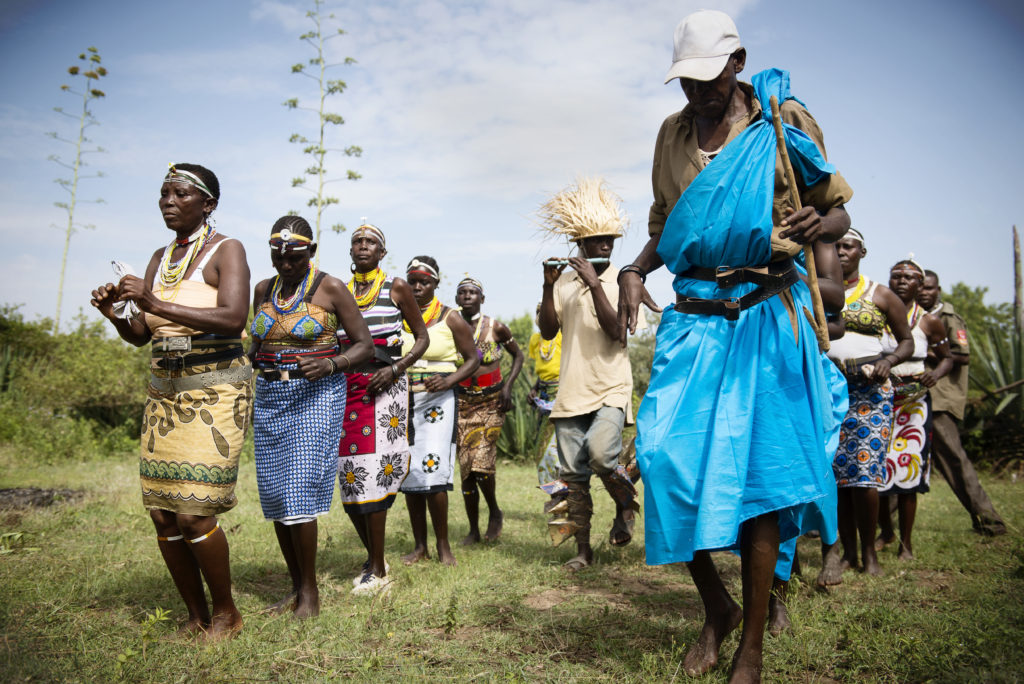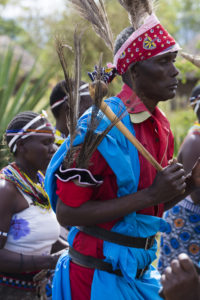The Tribes of East Africa: Kuria People
While most people are familiar with the Masaai tribe of East Africa, the lesser-known Kuria tribe too has a rich cultural heritage and fascinating culture.
A brief history
The homeland of the Kuria people, the Kuria District or Bakuria,straddles the border of Kenya and Tanzania, stretching acrossthe southwestern corner of Kenya and the Serengeti district ofNorthern Tanzania. Originally this area of land was inhabited by asmall number of Bantu-speaking people, who were among thefirst Bantu to settle here sometime between 200AD and10000AD.
History does not relate much about these Bantu people until theturn of the 16th century when the Nilotic people arrived, followedby the Maasai. These tribes were aggressive in nature and theBantu tribes living on the shores on Lake Victoria had little choicebut to flee or be conquered. The Bantu therefore came togetherfor protection and eventually, by around 1900, three new subtribalidentities had been created: the Kuria to the southeast, theGusii to the east and the Luhya to the north. Essentially, theKuria are an amalgamation of various pre-existing Bantu peoplewhose individual identities have now largely been lost.
The latter half of the 19th century was a much calmer time for theKuria, largely due to the Maasai civil war, which neutralized thethreat to the Bantu people and they were largely able to establishthemselves in their new area.

Kuria People
Way of life
In the past the Kuria people were pastoral. Traditionally the menwould go out with their cattle and the women would stay in theboma (village) preparing food, looking after the elderly and thechildren and collecting water and firewood. In 1952 theTanzanian government declared the Serengeti a protected areaand the Kuria tribe were no longer free to roam or hunt. Withthese enforced boundaries, they turned their attention to farming,raising livestock and poaching.
Today the Kuria are mainly agriculturalists, keeping cattle for milkand meat. Their crops of maize, beans, millet and sorghum aregrown for barter or sale but although the region is fertile, it stillremains extremely poor.
Traditions
Ancient Kurian life was rich in traditions and historically centeredon a ritual cycle that individuals and the community underwent.As a rite of passage, circumcision was a central institution in thelives of the Kurian people that marked the transition fromchildhood to adulthood and changed the status of the individualand his or her family. Traditionally marriage between 2youngsters was arranged by the fathers and the groom’s familypaid for the dowry. After the agreed dowry had been paid themarriage was arranged for 3 months later.
Nowadays howeverweddings have modernized and most young people get married in church.Music was also very much a part of Kurian life. They have several musical instruments including thezeze, which is like a primitive violin and the ritungu, which is similar toa lyre with 8 strings and wasmade out of wood and animal skins. Today they are mostly made out of nylon strings and metalcontainers, but the drums are still made of wood and leather. Songs were also very important and weresung for a purpose – to communicate a message of victory, mourning, birth and marriage – and certainvoices and tones were used to announce different events. Although the Kuria people still love to singand dance, things have changed and the youth ignore old traditions and listen to songs on the radio.
Singing songs as a way of communication is also mostly redundant as mobile phones take over.

Kuria Tribe
Unlike the Maasai the Kuria tribe were much more exposed to modernization and education, which hasalso led to the loss of many of the traditions and an erosion of their ancient culture. Elders blame thison the introduction of formal education, foreign visitors and religion, however they are also reluctant toperpetuate some of the traditions in schools, especially those like female circumcision which are betterleft in the annals of time. Today it is generally accepted that education is a good thing; schools arehelping children to learn to live with the changing times and children are keen to work in the wildlife andtourism industries as they are able to see what an important part tourism plays.
Clothing
In the past, the Kuria men wore their hair long and coloured it with red murrum. In order to wear it longthey would pierce a tin with many holes, fill it with hot charcoal and ‘iron’ it over their heads, very muchlike a modern day hair straighteners! The women wore beads and shaved their heads, and mostpeople wore animal skins and walked barefoot. Animal skins have however not been worn since 1963when poaching was outlawed, and most people now wear Western clothing and shoes. The tradition ofpiercing and stretching their ears into long loops has also mostly stopped.
Join Us In East Africa
We would love to welcome you to East Africa to experience the land these incredibly interesting tribes call home. Make an enquiry below or get in touch with your usual travel partner to help you plan your trip to Kenya or Tanzania!
The post The Tribes of East Africa: Kuria People appeared first on Asilia Africa.
More Positive Impact Articles

Electric Vehicles: The Future Of East African Safari Travel?
12 January 2020October 2019 saw the arrival of our first electric, solar-powered safari vehi...

Its Our 15th Birthday: Celebrating 15 Years of Making a Genuine Difference
08 November 2019This year, we're celebrating our 15th birthday and commemorating 15 years of...

World Tourism Awards 2019: Asilia Recognised For Our Positive Impact
01 November 2019The World Tourism Awards acknowledge, reward, and celebrate excellence across...

Supersized Traditional Maasai Necklace
21 October 2019In 2009, we became a founding member of the Mara Naboisho Conservancy and sin...





